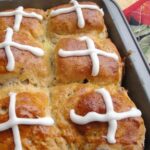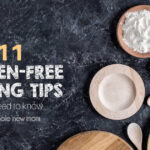Imagine the warm, comforting aroma of freshly baked banana bread filling your kitchen, a treat so moist and delicious that even the most discerning gluten-free palates will be clamoring for more. This isn’t just any banana bread; it’s a revelation, a testament to the fact that gluten-free baking can be both incredibly simple and unbelievably rewarding. Prepare to unlock the secrets to creating a loaf so irresistibly flavorful and tender, it will vanish in a flash. We’ll guide you through every step, from selecting the perfect ripe bananas to mastering the art of a perfectly golden-brown crust.

This comprehensive guide will equip you with the knowledge and confidence to bake gluten-free banana bread that surpasses all expectations. We’ll explore various gluten-free flour blends, offer substitutions for traditional ingredients, and provide detailed, step-by-step instructions for achieving that coveted moist and tender crumb. Discover three exciting variations – nutty, chocolatey, and spiced – to personalize your baking experience and delight your taste buds. Troubleshooting tips and creative presentation ideas will ensure your banana bread is not only delicious but also visually stunning, a true masterpiece to be savored.
Recipe Development and Variations
This section details a basic gluten-free banana bread recipe, followed by three delicious variations to suit different tastes. The key to a successful gluten-free banana bread lies in using the right blend of flours and ensuring sufficient moisture. Following these recipes carefully will yield a moist, tender loaf every time.
Basic Gluten-Free Banana Bread
This recipe provides a foundation for delicious and adaptable gluten-free banana bread. The combination of almond flour and tapioca starch creates a light and moist crumb.
- Ingredients: 1 ½ cups almond flour, ½ cup tapioca starch, ¾ teaspoon baking soda, ½ teaspoon salt, ¾ cup granulated sugar, ½ cup brown sugar, 2 large eggs, ½ cup unsweetened applesauce, 1 teaspoon vanilla extract, 3 very ripe bananas, mashed.
- Instructions: Preheat oven to 350°F (175°C). Grease and flour (with gluten-free flour blend) a 9×5 inch loaf pan. In a large bowl, whisk together almond flour, tapioca starch, baking soda, and salt. In a separate bowl, cream together granulated sugar and brown sugar. Beat in eggs one at a time, then stir in applesauce and vanilla. Add the mashed bananas and mix until just combined. Gradually add the dry ingredients to the wet ingredients, mixing until just moistened. Do not overmix. Pour batter into the prepared loaf pan and bake for 50-60 minutes, or until a wooden skewer inserted into the center comes out clean. Let cool in the pan for 10 minutes before transferring to a wire rack to cool completely.
Nutty Banana Bread Variation
Adding nuts provides a delightful textural contrast and enhances the flavor profile of the banana bread. Walnuts or pecans are excellent choices.
- Ingredients: Follow the basic recipe, adding ½ cup chopped walnuts or pecans to the batter before pouring into the loaf pan.
- Instructions: Follow the baking instructions for the basic recipe. The addition of nuts may slightly increase baking time by 5-10 minutes.
Chocolate Chip Banana Bread Variation
The combination of banana and chocolate is a classic pairing that works beautifully in this gluten-free bread. Use high-quality chocolate chips for the best results.
- Ingredients: Follow the basic recipe, adding 1 cup of semi-sweet chocolate chips to the batter before pouring into the loaf pan.
- Instructions: Follow the baking instructions for the basic recipe. The chocolate chips may slightly increase baking time by 5-10 minutes.
Spiced Banana Bread Variation
Warm spices like cinnamon and nutmeg complement the sweetness of the bananas, creating a comforting and aromatic bread.
- Ingredients: Follow the basic recipe, adding 1 teaspoon ground cinnamon, ½ teaspoon ground nutmeg, and a pinch of ground cloves to the dry ingredients.
- Instructions: Follow the baking instructions for the basic recipe. The addition of spices will not significantly affect baking time.
Tips for a Moist and Tender Crumb
Using very ripe bananas is crucial. The higher sugar content in ripe bananas contributes to moisture and sweetness. Don’t overmix the batter; overmixing develops gluten (even in gluten-free flours), resulting in a tough crumb. Let the bread cool completely in the pan before slicing to prevent it from crumbling. Storing the bread in an airtight container at room temperature will help maintain its moisture. A slight increase in the amount of applesauce can also contribute to a moister crumb.
Baking Techniques and Troubleshooting

Creating a perfect gluten-free banana bread requires a gentle hand and a keen eye. Unlike traditional wheat-based breads, gluten-free batters behave differently, demanding a nuanced approach to mixing and baking. Understanding these nuances is key to achieving a moist, tender, and flavorful loaf every time.
Proper mixing techniques are paramount in gluten-free baking. Overmixing develops the gluten strands in wheat flour, creating a chewy texture. However, in gluten-free baking, overmixing leads to a tough, rubbery result because we’re working with starches and other binding agents instead of gluten. The goal is to combine ingredients just until they are moistened and evenly distributed, leaving a few small lumps. Imagine the batter as a softly blended watercolor painting; a few flecks of color (lumps) remain, adding to its charm rather than detracting from it.
Gluten-Free Batter Mixing
A light touch is essential. Instead of vigorous mixing, gently fold the dry ingredients into the wet ingredients using a spatula or a large spoon. Avoid using a mixer unless absolutely necessary, and if you do, use low speed for a short period. The visual cue for proper mixing is a batter that is just combined, not completely smooth. It should have a slightly lumpy, yet cohesive texture. Think of the consistency of a thick pancake batter; it should flow off the spoon but not be completely liquid. Overmixed batter will be noticeably smoother and potentially tougher after baking.
Checking for Doneness
Overbaking is a common culprit in dry, crumbly gluten-free banana bread. Instead of relying solely on a timer, check for doneness using a visual and tactile approach. Insert a wooden skewer or toothpick into the center of the loaf. A clean skewer indicates that the bread is baked through. However, a few moist crumbs clinging to the skewer are acceptable, especially in a banana bread, which naturally retains more moisture than other breads. The top of the loaf should be golden brown and spring back gently when lightly pressed. The edges should also pull away slightly from the sides of the pan. A dark brown top suggests overbaking, while a pale top indicates underbaking.
Troubleshooting Gluten-Free Banana Bread
Addressing common issues is vital for achieving consistent results. Understanding the cause and solution for each problem allows for adjustments in future bakes.
- Dry Crumb: This often results from overbaking or insufficient moisture in the batter. Add an extra tablespoon or two of milk or yogurt to the batter next time, or reduce baking time slightly. You might also consider adding a little more mashed banana for extra moisture.
- Dense Texture: This might be caused by overmixing or using too much of a binding agent (like xanthan gum). Ensure you are mixing gently and using the minimum amount of binding agent specified in your recipe. Using a lighter hand and slightly less binder will improve the texture.
- Sinking Center: A sunken center can be due to underbaking or an uneven distribution of leavening agents. Bake the loaf for a few more minutes and check for doneness. Ensure you’ve thoroughly combined the baking powder and soda with the dry ingredients to prevent uneven rising.
From the initial selection of perfectly ripe bananas to the final flourish of a dusting of powdered sugar, creating gluten-free banana bread that everyone will adore is a journey filled with delightful discoveries. This guide has armed you with the techniques and recipes to achieve a moist, flavorful, and utterly irresistible loaf, proving that gluten-free baking can be both accessible and exceptionally rewarding. So, gather your ingredients, preheat your oven, and prepare to experience the joy of baking a truly exceptional banana bread – one that will become a cherished staple in your kitchen and a crowd-pleaser at every gathering.
FAQ Compilation
Can I use a different type of oil besides the one specified in the recipe?
Yes, you can experiment with other oils like coconut oil or avocado oil, but be aware that they might slightly alter the flavor and texture of the bread.
How long can I store the leftover banana bread?
Stored properly in an airtight container at room temperature, your gluten-free banana bread should remain fresh for about 3-4 days. Freezing extends its shelf life significantly.
What happens if I overmix the batter?
Overmixing gluten-free batter can lead to a tough and dense loaf. Mix only until the ingredients are just combined.
My banana bread is sinking in the middle. What went wrong?
This often happens due to underbaking or using too much liquid. Ensure your oven is properly preheated and follow the baking time instructions closely.


